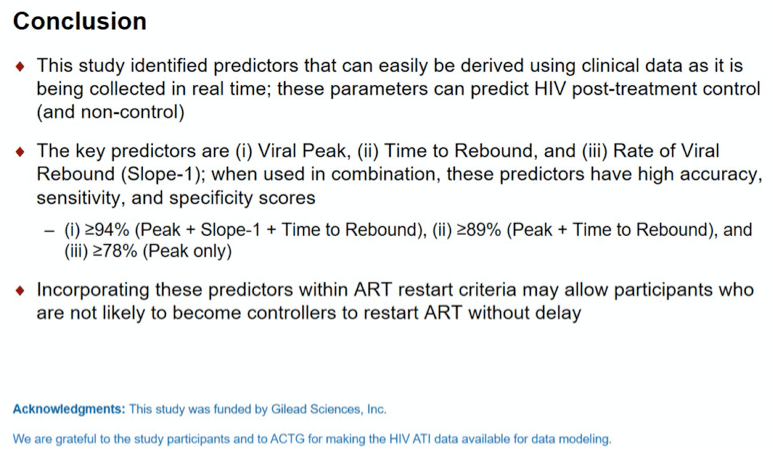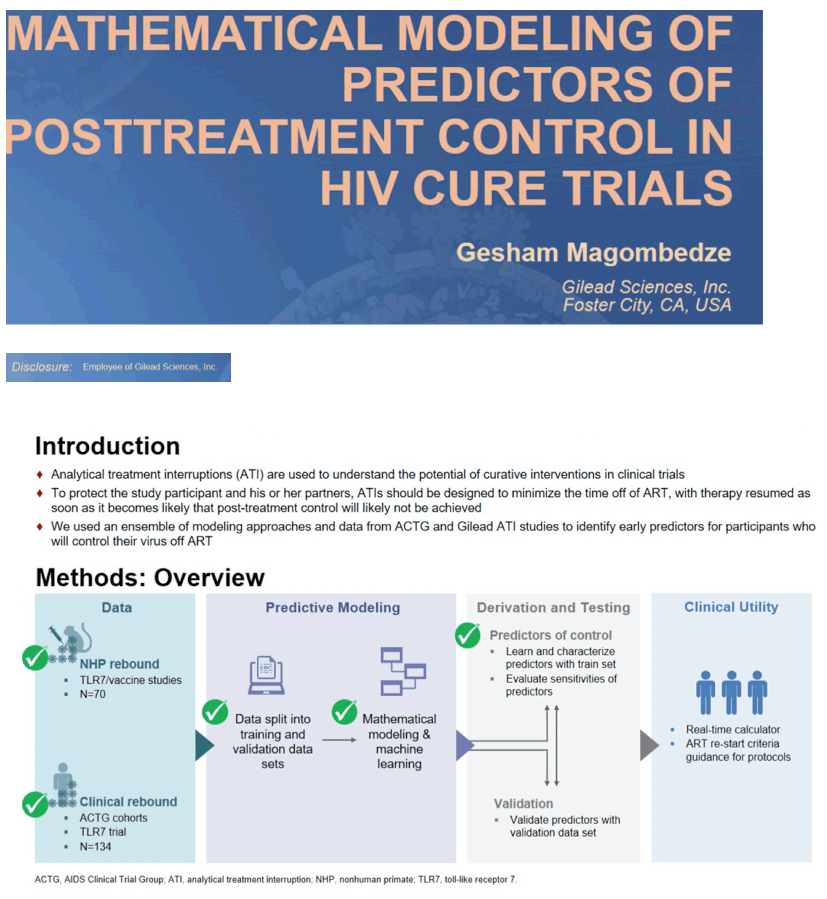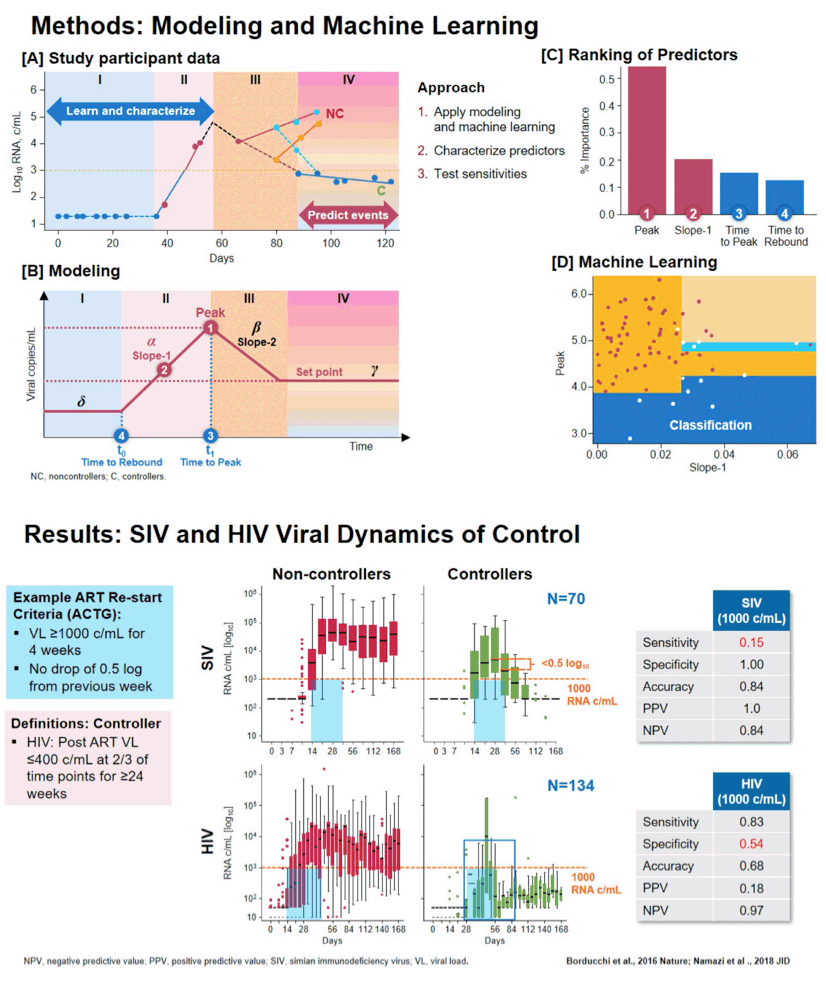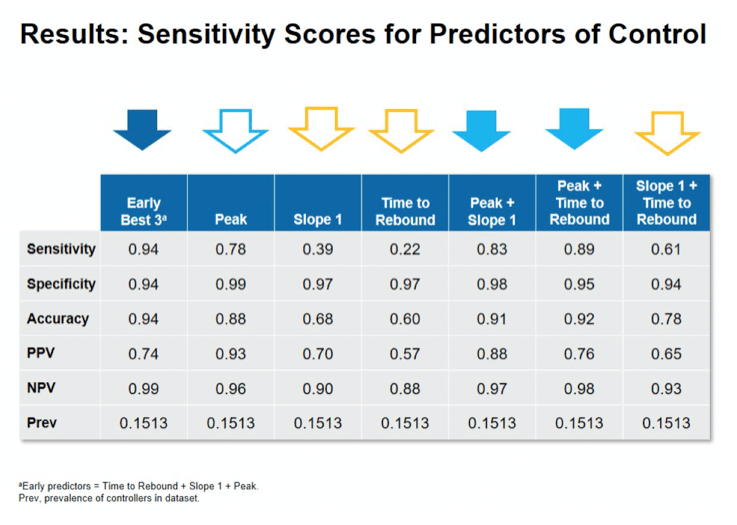 |
 |
 |
| |
MATHEMATICAL MODELING OF PREDICTORS OF POSTTREATMENT CONTROL IN HIV CURE TRIALS
|
| |
| |
CROI March 6-10 Reported by Jules Levin
Gesham Magombedze1, Devi SenGupta1, Jonathan Li2, Romas Geleziunas1, Steven G. Deeks3
1Gilead Sciences, Inc, Foster City, CA, USA, 2Brigham and Women's Hospital, Boston, MA, USA, 3University of California San Francisco, San Francisco, CA, USA
Background: Achieving an HIV cure or durable antiretroviral therapy (ART)-free HIV control is a significant unmet need. Due to the lack of validated predictors of virologic control, clinical trials rely on analytical treatment interruptions (ATI) to assess the efficacy of potential curative interventions. After ART is interrupted, a period of acute viremia occurs before the immune system responds, and a setpoint established. As this period of acute viremia poses risks to the participant and their sexual partners, algorithms that predict who will eventually control their virus might be helpful. Detailed studies of early viral dynamics in post-treatment controllers versus non-controllers may also provide insights into the development of an optimal therapeutic strategy.
Methods: We analyzed data from five AIDS Clinical Trials Group (ACTG) ATI studies (A371, A5024, A5068, A5187, A5197) and from the GS-US-382-3961 TLR7 study, in which prior controllers on ART interrupted therapy (N=134). Mathematical modeling and machine learning were used to identify early predictors of control at setpoint (defined by viral loads ≤400 c/mL at 2/3 of timepoints for ≥24 weeks). Our analysis replicated real time data collection in a clinical study, delineating outcomes for individuals who will become virologic controllers (N=20) from non-controllers.
Results: Our mathematical model identified the peak viral load, the rate of viral rebound (Slope-1), the time-to-peak and the time-to-rebound as the best predictors of virologic control following treatment interruption (Figure). These parameters identified individuals that became virologic controllers with accuracy, sensitivity and specificity scores of (i) ≥94% (Peak+Slope-1+Time-to- rebound), (ii) ≥89% (Peak+Time-to-rebound), and (ii) ≥78% (Peak). Statistical analysis showed that viral peak is the most important predictor (p<0.0001), then Time-to-rebound (p=0.0019) and Slope-1 (p=0.026).
Conclusion: Early identification of virologic controllers is important to improve the safety and efficiency of ATI trials. During the immediate post-ART period, peak viremia, the initial viral load slope and time-to-rebound predicted long-term post-treatment control. The quality of the host-response during the earliest stages of virus rebound may have long-term implications, suggesting that remission strategies will need to be optimized so that they are effective at the time the virus begins to spread systemically.




|
| |
|
 |
 |
|
|